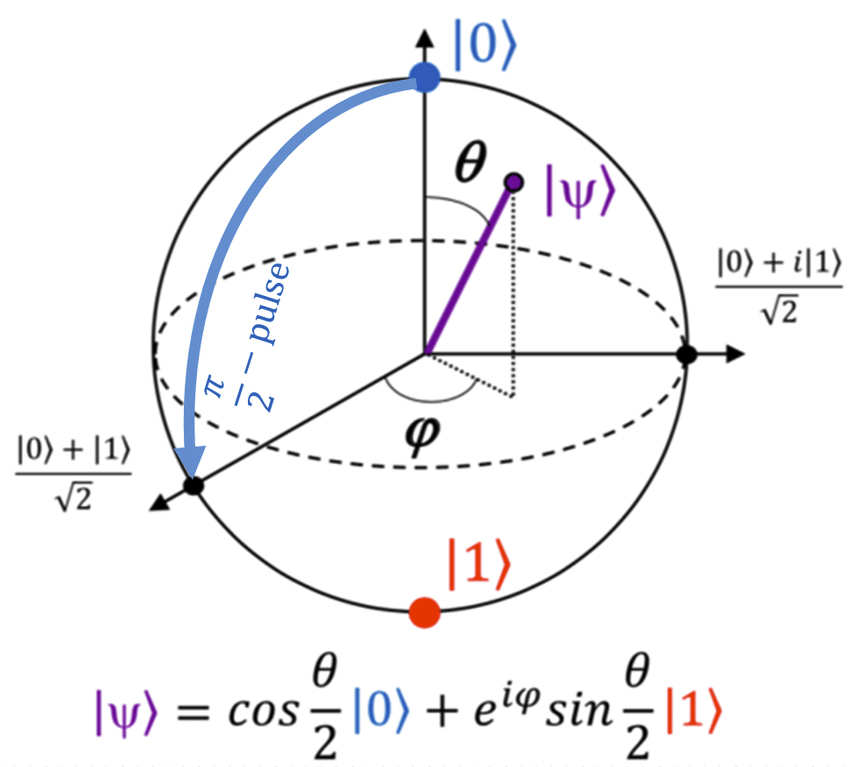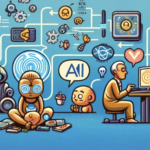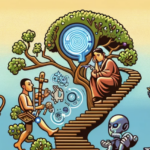
Quantum computing is an exciting new technology that has the potential to revolutionize the way we do business, communicate with each other, and solve problems.
Quantum computers are able to solve problems much faster than traditional computers because they use quantum bits, or qubits.
In a traditional computer, each bit is either a 0 or a 1. However, in a quantum computer, each qubit can be both a 0 and a 1 simultaneously. This allows quantum computers to explore many different solutions at the same time, which speeds up the process of finding the best solution.
Quantum computers are still in their early stages of development, but they have already shown promise in solving certain problems that are too difficult for traditional computers to solve.
For example, quantum computers can be used to break the codes that protect our data from being accessed by unauthorized people. They can also be used to simulate quantum systems, which could lead to new discoveries in quantum physics.
Table of Contents
Explain quantum computing in simple terms
Quantum computing is the study of how to apply quantum physics to creating new ways of computing. Quantum computing is made up of qubits, while classical computing is made up of bits.
A normal computer bit can be 0 or 1, while a qubit can be either 0 or 1, or a superposition of both 0 and 1.
How are quantum computers different from classical computers?
Quantum computers are a type of computer that uses quantum mechanical phenomena, such as superposition and entanglement, to perform operations on data. Quantum computers are different from traditional computers, which use classical physics.
Traditional computers use bits that are either a 0 or a 1. However, quantum computers use qubits, which can be both a 0 and a 1 simultaneously. This allows quantum computers to explore many different solutions at the same time, which speeds up the process of finding the best solution.
Another important difference is that quantum computers can be programmed to operate in different modes, called quantum gates, which allow them to solve certain types of problems more efficiently. Quantum gates are similar to the logic gates used in classical digital circuits.
What is quantum computing used for?
Quantum computing is still in its early stages of development, but it has already shown promise in solving certain problems that are too difficult for traditional computers to solve.
For example, quantum computers can be used to break the codes that protect our data from being accessed by unauthorized people. They can also be used to simulate quantum systems, which could lead to new discoveries in quantum physics.
We’ll get more into applications later in the article.
What are some challenges quantum computing faces?
One of the main challenges quantum computing faces is finding a way to scale up the number of qubits while keeping the system stable. In addition, quantum computers need to be shielded from interference from the environment, which can cause errors in calculations.
Another challenge is that quantum computers are still very new and there is not a lot of software available that takes advantage of their capabilities.
However, this is changing rapidly as quantum computing becomes more popular.
What does the future hold for quantum computing?
The future of quantum computing is very exciting. As quantum computers become more powerful and more stable, they will be able to solve increasingly difficult problems.
In addition, as more software becomes available that takes advantage of quantum computers’ capabilities, we will see even more amazing applications for them.
Applications of quantum computing
Quantum computing is still in its early stages, but there are already a number of applications where the technology can or could be used.
Quantum simulation
One example is quantum simulation, which is used to study the behavior of particles on a quantum scale. Quantum computers can also be used for quantum machine learning, which is a type of artificial intelligence that uses quantum algorithms to learn from data.
Quantum annealing and adiabatic optimization
Another application is quantum annealing, which is used to find the global minimum of a function.
Quantum adiabatic optimization is a similar technique that can be used to find the optimal solution to a problem.
Data security
Quantum computers are also being explored as a way to break the codes that protect our data from being accessed by unauthorized people.
The quantum computer algorithm Shor’s algorithm can be used to break these codes in a matter of minutes.
This makes quantum computers a potential threat to data security, and businesses and governments are starting to take notice.
Machine learning
Quantum computers are also being explored as a way to improve machine learning.
Quantum computers can be used to learn from data in a more efficient way than traditional computers.
This could lead to new advances in machine learning and artificial intelligence.
Computational biology
Quantum computers are also being used to study the behavior of particles on a quantum scale, which could lead to new discoveries in quantum physics.
One example is computational biology, which is the study of how molecules interact with each other.
This field could benefit from the use of quantum computers, which can process large amounts of data much faster than traditional computers.
Transportation
Quantum computing is also being explored as a way to improve transportation.
The quantum computer algorithm Grover’s algorithm can be used to search through large databases more efficiently than traditional algorithms.
This could be used to improve traffic management and reduce congestion in cities.
Manufacturing
Quantum computing is also being used in the manufacturing industry.
One example is quantum metrology, which is the use of quantum mechanics to measure quantities.
This could be used to improve the accuracy of measurements in factories.
Integrated circuits
Quantum computing is also being used to design new types of integrated circuits.
Integrated circuits are a type of chip that is used in electronic devices.
Quantum computers can be used to design smaller and faster integrated circuits than traditional computers.
Finance
Quantum computing is also being explored as a way to improve financial models.
Financial models are used to predict future events and trends in the stock market.
Quantum computers can be used to speed up the process of modeling financial data.
Drug design
Quantum computing is also being used to design new types of drugs.
Drug design is the process of finding new drugs by modeling their chemical structure.
Quantum computers can be used to speed up this process by running quantum simulations of different molecules.
Weather forecasting
Quantum computing is also being explored as a way to improve weather forecasting.
Weather forecasting is the process of predicting the weather future events and trends.
Quantum computers can be used to speed up the process of modeling weather data.
Quantum supremacy
Being able to perform calculations that any classical computer can make – and going beyond that – is referred to as “quantum supremacy.”
Quantum computing is the use of quantum-mechanical phenomena, such as superposition and entanglement, to perform operations on data. A quantum computer operates on qubits, which are units of quantum information.
One of the most important features of quantum computers is their ability to perform quantum simulations. This is a process where a quantum computer can be used to model the behavior of particles on a quantum scale. This could lead to new discoveries in various fields.
Quantum computers are also being explored as a way to improve machine learning. Machine learning is a process where a computer can be taught to learn from data. This could lead to new advances in artificial intelligence.
Quantum complexity theory
The idea behind quantum computers is not so they can solve any problems that classical computers aren’t able to already solve.
The ability to compute and solve problems should be equal.
However, it is believed that they can solve certain problems faster than classical computers.
As one example, quantum computers can efficiently factor integers, which is a task that classical computers are not able to do.
For instance, in 2001, there was the first execution of Shor’s algorithm at IBM’s Almaden Research Center and Stanford University. The number 15 was factored by using 1018 identical molecules, each of which contained seven active nuclear spins.
The IBM Q System One (2019), was the first circuit-based commercial quantum computer.
Models of computation for quantum computing
There are various models of computation for quantum computing.
A few are listed below.
Turing machine
A quantum Turing machine (QTM) is a model of quantum computation that is based on the Turing machine model of classical computation.
A Turing quantum computer is theoretically important but the physical implementation of this model is not feasible.
A QTM has two types of nodes:
- quantum nodes and
- classical nodes
Quantum nodes can be in one of two states: quantum or classical. Classical nodes can be in one of three states: 0, 1, or ? (don’t know).
The advantage of this model is that it is easy to understand and can be used to model a wide range of quantum algorithms.
Other models of computation for quantum computing have been shown to be the equivalent to a Turing machine.
Given a perfect implementation of a Turing quantum computer, it can simulate all the other forms with no more than polynomial overhead.
However, this equivalence isn’t necessary for quantum computers that may exist in reality, since the overhead of simulation may be too large to be practical for real-world applications.
Hamiltonian circuit
A quantum Hamiltonian circuit is a model of quantum computation that is based on the Hamiltonian circuit model of classical computation.
This model is similar to the quantum gate array model, but it uses quantum Hamiltonians instead of quantum gates.
The advantage of this model is that it can be used to model more complex quantum algorithms.
Church-Turing thesis
The Church-Turing thesis is a principle that states that every effective method of computation can be reduced to a sequence of steps that are executed by a Turing machine.
This principle applies to both classical and quantum computation.
This principle is important because it shows that quantum computers are not inherently different from classical computers. They both can be reduced to the same basic model.
Bl quantum computer
A Bl quantum computer is a model of quantum computation that is based on the Bl quantum machine model of classical computation.
This model is similar to the quantum Turing machine, but it uses binary logic instead of classical logic.
The advantage of this model is that it can be used to model more complex quantum algorithms.
Conway’s game of life
Conway’s game of life is a mathematical simulation of a simplified version of life on a grid.
This simulation can be run on a classical computer or a quantum computer.
The advantage of running the simulation on a quantum computer is that it can be done in polynomial time.
This means that the quantum computer can solve the problem in a shorter amount of time than a classical computer.
Postselection
Postselection is a technique that can be used to improve the performance of quantum algorithms.
Postselection is a process where the output of an algorithm is selected based on the results of a previous step in the algorithm.
This technique can be used to reduce the number of quantum gates required for an algorithm.
Error correction
Error correction is a process that can be used to improve the performance of quantum algorithms.
Error correction is a process where errors that occur during computation are corrected using feedback from previous steps in the algorithm.
This technique can be used to improve the reliability of quantum algorithms.
Quantum gate array
Computation decomposed into a sequence of few-qubit quantum gates.
This model is inspired by the way in which quantum computers are built.
The quantum gates are represented by a graph, where each node is a qubit and edges represent quantum operations.
One-way quantum computer
A one-way quantum computer is a computation decomposed into a sequence of Bell state measurements and single-qubit quantum gates applied to a highly entangled initial state, which is called a cluster state. This is done using a technique known as quantum gate teleportation.
Adiabatic quantum computer
An adiabatic quantum computer is based on quantum annealing.
It’s a computation decomposed into a slow continuous transformation of an initial Hamiltonian into a final Hamiltonian, where the final Hamiltonian’s ground states contain the solution.
Topological quantum computer
A topological quantum computer works via computation decomposed into the braiding of anyons in a 2D lattice.
Conclusion
A quantum computer is a computer that uses quantum-mechanical phenomena, such as superposition and entanglement, to perform operations on data.
A quantum computer operates on qubits, which are units of quantum information, that can equal 0 or 1 (like a classical computer) or somewhere in between (unlike a classical computer).
Quantum computers are different from classical computers in several ways. The most important difference is that quantum computers can exploit quantum mechanical phenomena to perform operations on data that are beyond the reach of classical computers. Quantum computers, in terms of their value-additive application, can solve certain problems much faster than classical computers.


![Backwards 3: How to Type "Ɛ" [EASY]](https://softwareblade.com/wp-content/uploads/2022/02/Screen-Shot-2022-02-19-at-9.03.25-PM-150x150.png)